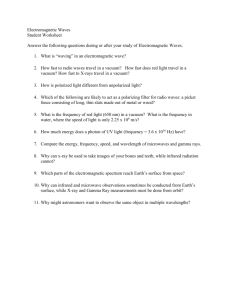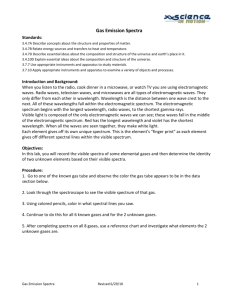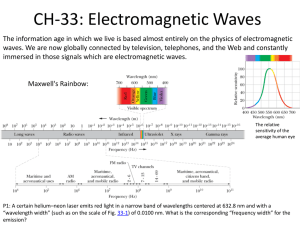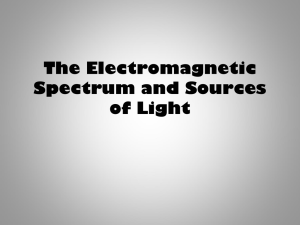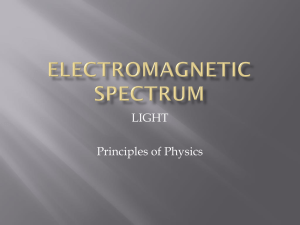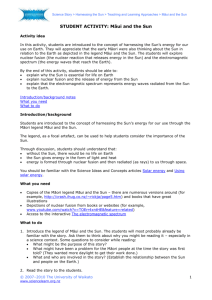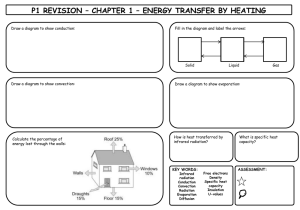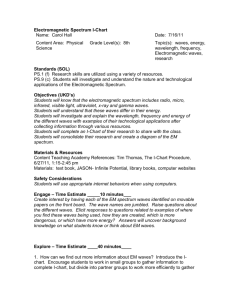Waves - UCLA Physics & Astronomy
advertisement
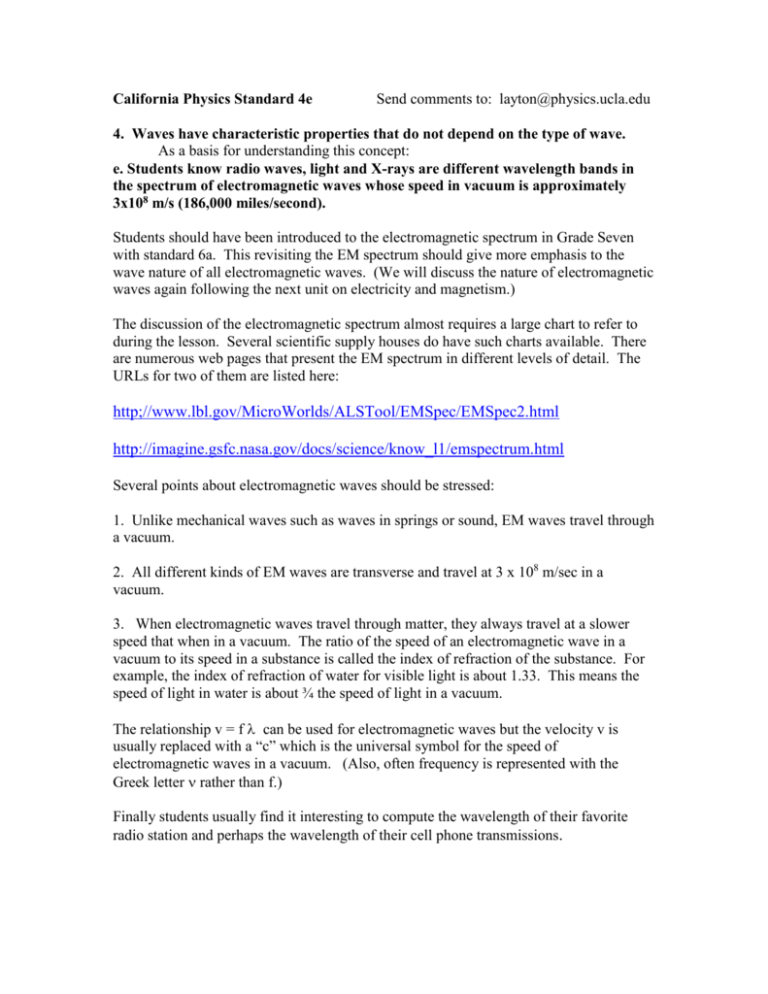
California Physics Standard 4e Send comments to: layton@physics.ucla.edu 4. Waves have characteristic properties that do not depend on the type of wave. As a basis for understanding this concept: e. Students know radio waves, light and X-rays are different wavelength bands in the spectrum of electromagnetic waves whose speed in vacuum is approximately 3x108 m/s (186,000 miles/second). Students should have been introduced to the electromagnetic spectrum in Grade Seven with standard 6a. This revisiting the EM spectrum should give more emphasis to the wave nature of all electromagnetic waves. (We will discuss the nature of electromagnetic waves again following the next unit on electricity and magnetism.) The discussion of the electromagnetic spectrum almost requires a large chart to refer to during the lesson. Several scientific supply houses do have such charts available. There are numerous web pages that present the EM spectrum in different levels of detail. The URLs for two of them are listed here: http;//www.lbl.gov/MicroWorlds/ALSTool/EMSpec/EMSpec2.html http://imagine.gsfc.nasa.gov/docs/science/know_l1/emspectrum.html Several points about electromagnetic waves should be stressed: 1. Unlike mechanical waves such as waves in springs or sound, EM waves travel through a vacuum. 2. All different kinds of EM waves are transverse and travel at 3 x 108 m/sec in a vacuum. 3. When electromagnetic waves travel through matter, they always travel at a slower speed that when in a vacuum. The ratio of the speed of an electromagnetic wave in a vacuum to its speed in a substance is called the index of refraction of the substance. For example, the index of refraction of water for visible light is about 1.33. This means the speed of light in water is about ¾ the speed of light in a vacuum. The relationship v = f can be used for electromagnetic waves but the velocity v is usually replaced with a “c” which is the universal symbol for the speed of electromagnetic waves in a vacuum. (Also, often frequency is represented with the Greek letter rather than f.) Finally students usually find it interesting to compute the wavelength of their favorite radio station and perhaps the wavelength of their cell phone transmissions.



